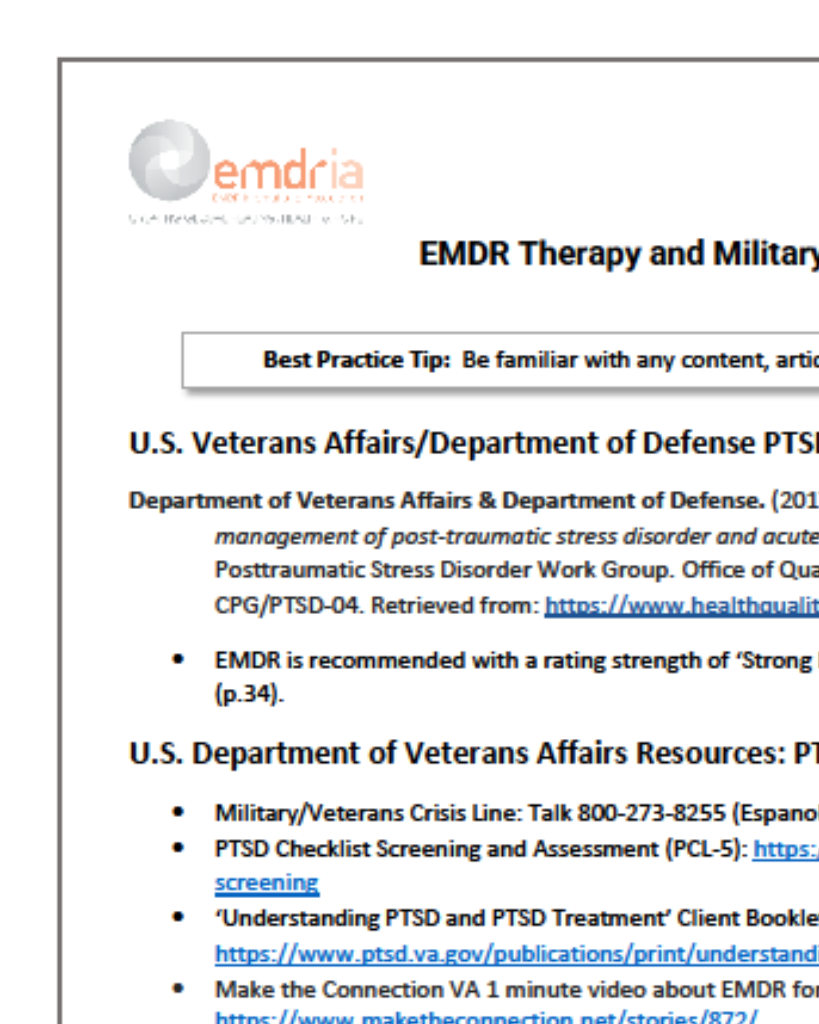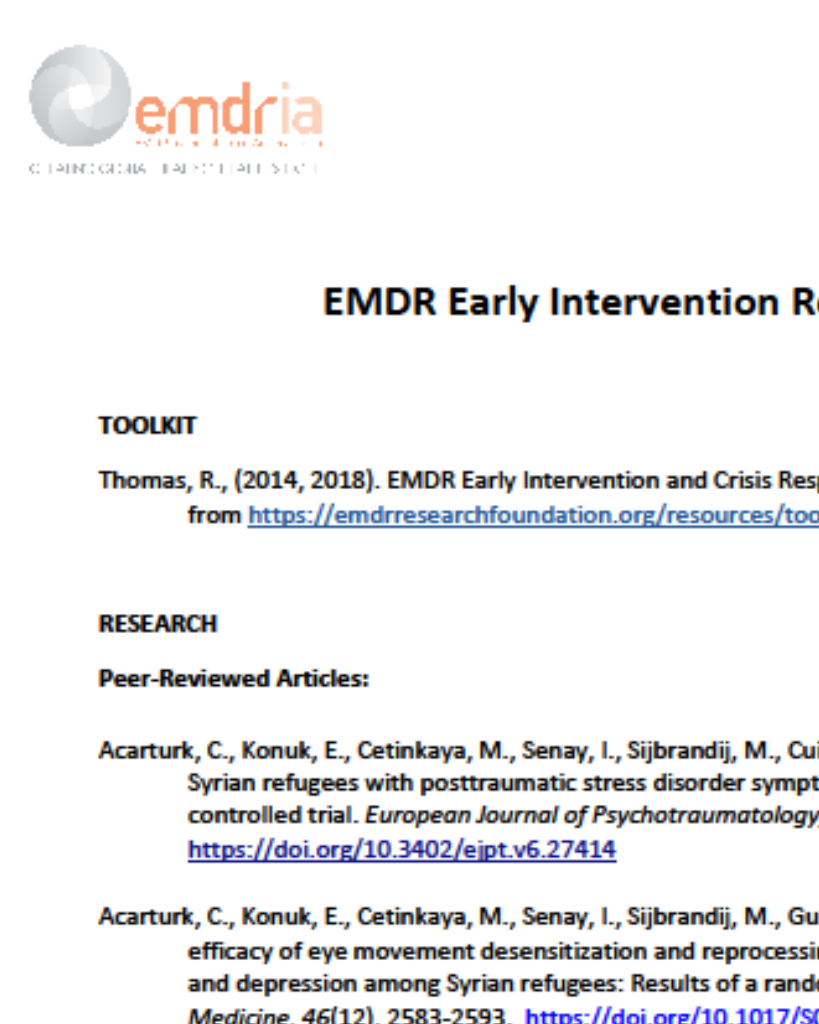Pediatric seizure-related posttraumatic stress and anxiety symptoms treated with EMDR: A case series
This study examined the potential effects of EMDR therapy in children with epilepsy-related posttraumatic stress and/or anxiety symptoms, using a case series design.
Article Abstract
“Purpose: To examine the potential effects of eye movement desensitization and reprocessing (EMDR) in children with epilepsy-related posttraumatic stress and/or anxiety symptoms, using a case series design.
Methods: Five children (aged 8–18) with epilepsy identified for seizure-related posttraumatic stress and/or anxiety symptoms were treated with EMDR. To examine potential treatment effects, posttraumatic stress and anxiety symptoms were assessed (CRTI and SCARED) pre- and post-EMDR and at 3-month follow-up. Normative deviation scores were calculated to examine the severity of seizure-related posttraumatic stress and anxiety symptoms over time. The reliable change index was calculated for pre- to posttreatment change of seizure-related posttraumatic stress and/or anxiety symptoms.
Results: Before EMDR, overall or subscale scores indicated that all children had (sub)clinical seizure-related posttraumatic stress symptoms and/or anxiety symptoms. Directly after EMDR, most children showed significant and/or clinical individual improvement, and these beneficial effects were maintained or reached at follow-up. The mean number of sessions was 2 (range 1–3, 45 min per session).
Conclusions: In case of seizure-related posttraumatic stress and/or anxiety, this study indicates that EMDR is a potentially successful quick and safe psychological treatment for children with epilepsy.
Highlights of the article
-
The first study to examine the potential effects of EMDR to reduce clinical seizure-related posttraumatic stress symptoms and/or anxiety symptoms in children with epilepsy.
-
After 1–3 EMDR (45 min) sessions, positive treatment effects were found on a range of seizure-related PTSD symptoms and/or anxiety symptoms.
-
During treatment, no seizures, absences, or any other adverse events were observed; the seizure diaries showed that none of the children experienced more seizures (or an unusual pattern) after treatment.
-
At the reevaluation of EMDR, all children and parents reported improvement in physical, emotional, cognitive, or social functioning.”
—Description from publisher
Article Access
Open Access
Dautovic, E., de Roos, C., van Rood, Y., Dommerholt, A., & Rodenburg, R. (2016). Pediatric seizure-related posttraumatic stress and anxiety symptoms treated with EMDR: A case series. European Journal of Psychotraumatology, 7(1), 30123. Open access: https://doi.org/10.3402/ejpt.v7.30123
Date
July 4, 2016
Creator(s)
Elmedina Dautovic, Carlijn de Roos, Yanda van Rood
Contributor(s)
Agnes Dommerholt, Roos Rodenburg
Topics
Anxiety/Panic/Phobias, Medical/Somatic, Seizures
Client Population
Children
Extent
12 pages
Publisher
Taylor & Francis
Rights
© 2016 The Author(s). Published by Informa UK Limited, trading as Taylor & Francis Group. This is an Open Access article distributed under the terms of the Creative Commons Attribution License (http://creativecommons.org/licenses/by/4.0/), which permits unrestricted use, distribution, and reproduction in any medium, provided the original work is properly cited.
APA Citation
Dautovic, E., de Roos, C., van Rood, Y., Dommerholt, A., & Rodenburg, R. (2016). Pediatric seizure-related posttraumatic stress and anxiety symptoms treated with EMDR: A case series. European Journal of Psychotraumatology, 7(1), 30123. Open access: https://doi.org/10.3402/ejpt.v7.30123
Audience
EMDR Therapists
Language
English
Content Type
Article, Peer-Reviewed
Access Type
External Resource, Open Access





